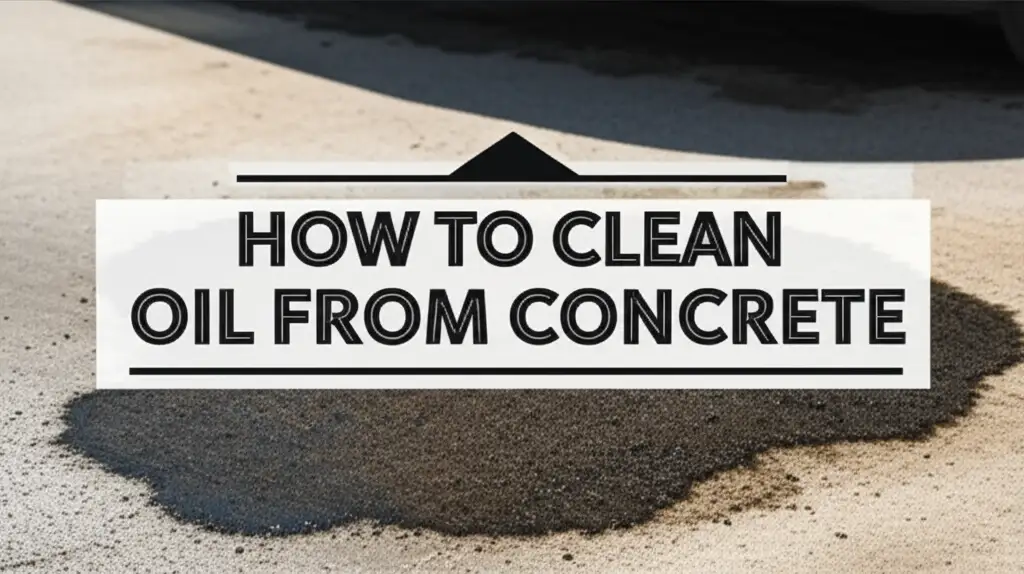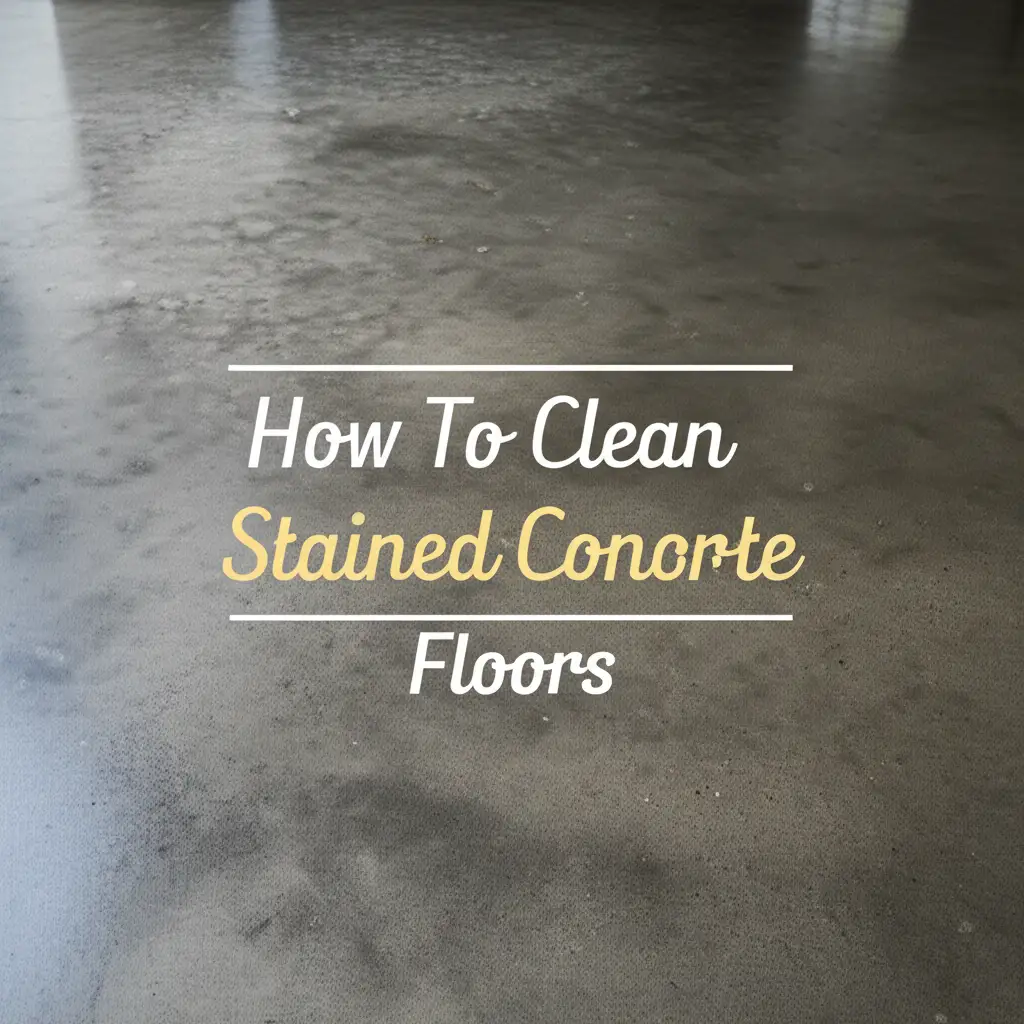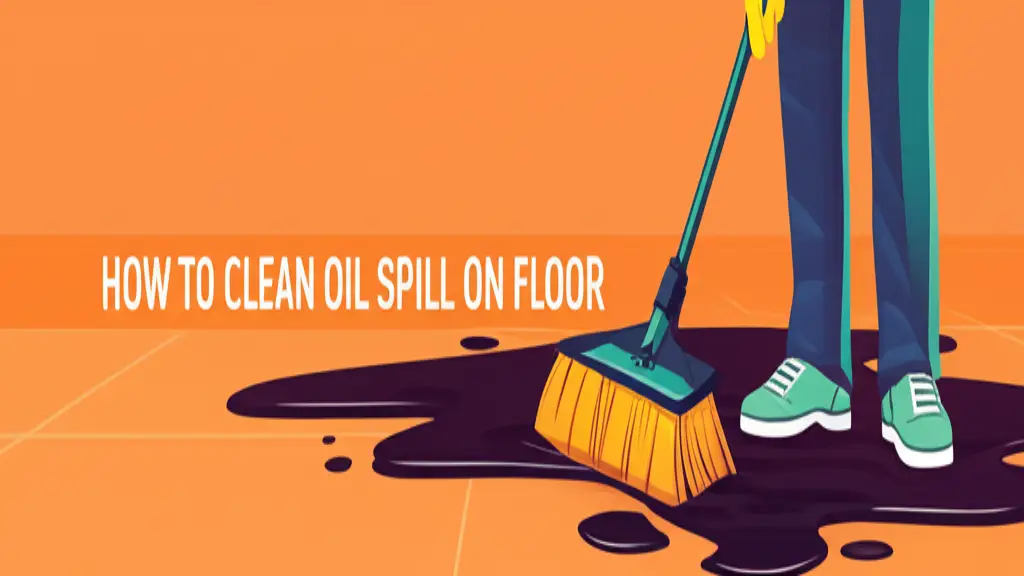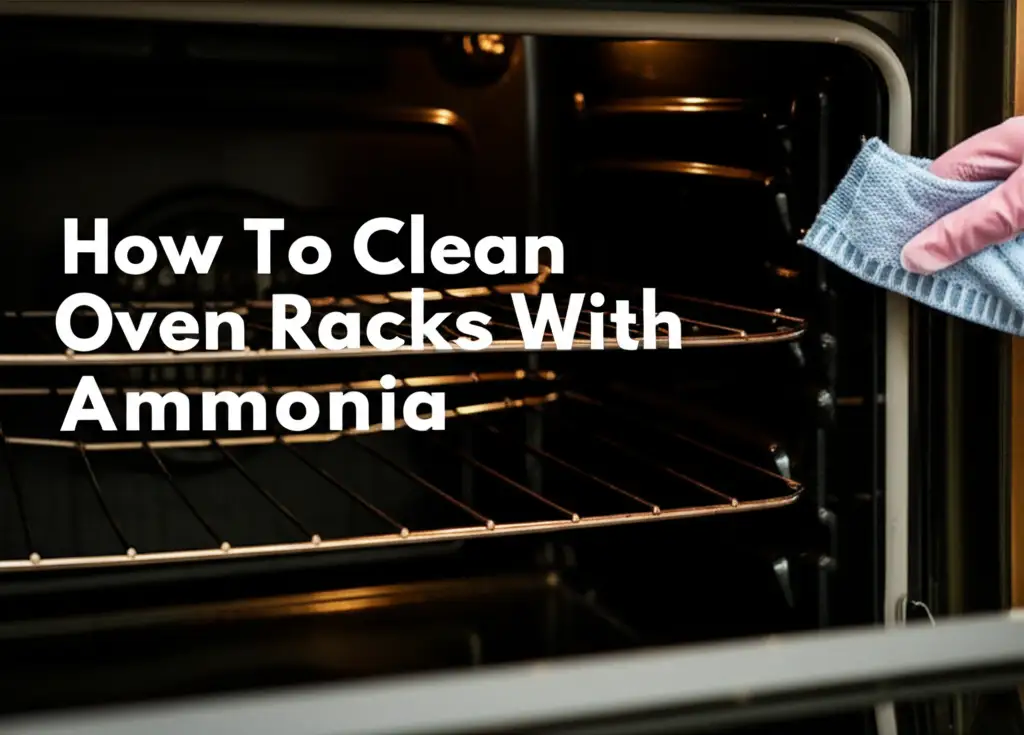· Home Cleaning · 18 min read
How To Clean Grease From Concrete
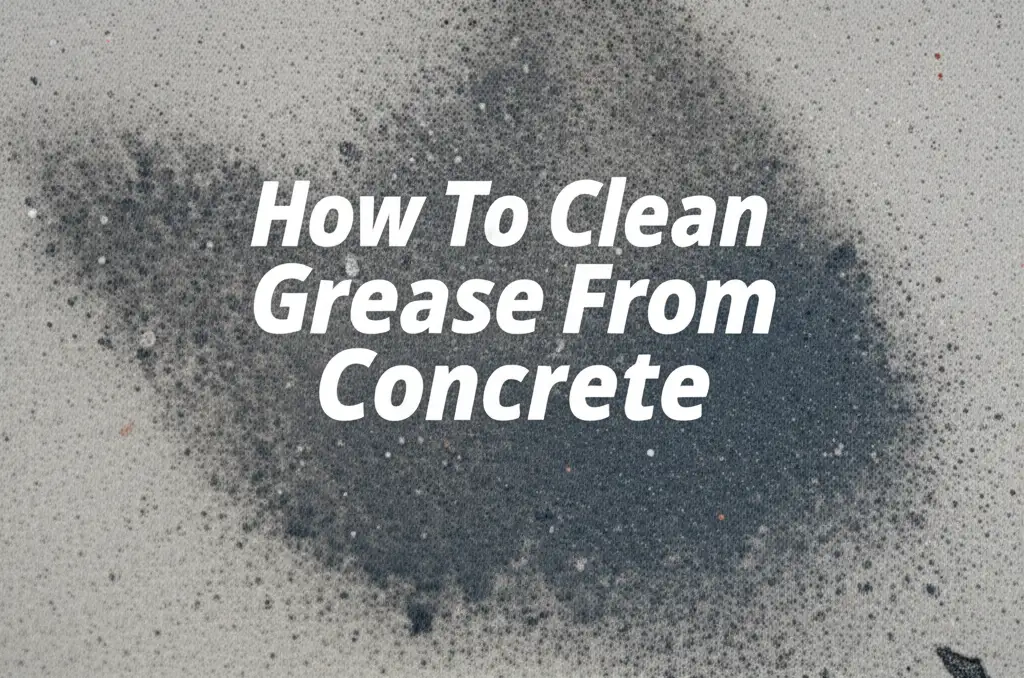
Easily Clean Grease From Concrete Surfaces
Grease stains on concrete can feel like a permanent problem. Whether it is a dropped oil can in the garage or a barbecue spill on the patio, these dark spots quickly become an eyesore. Concrete’s porous nature makes cleaning grease a challenge. The oil seeps deep into the material, creating stubborn marks.
Do not worry, a clean, stain-free concrete surface is achievable. This guide will show you how to clean grease from concrete using effective methods. We will cover everything from tackling fresh spills to removing old, set-in stains. You will learn about essential tools, powerful cleaners, and simple homemade solutions. Get ready to restore your concrete to its original look.
Takeaway
- Act Fast: Blot fresh spills immediately with absorbents.
- Choose Wisely: Select the right degreaser or homemade solution for the stain type.
- Scrub Thoroughly: Apply elbow grease for deep cleaning.
- Rinse Properly: Remove all cleaning agents to prevent new stains.
- Prevent Future Stains: Consider sealing concrete and using mats.
To effectively clean grease from concrete, absorb fresh spills with cat litter or sawdust, then apply a strong concrete degreaser or a homemade paste of dish soap and water. Scrub the area vigorously with a stiff brush. Finally, rinse thoroughly with water, possibly using a pressure washer for stubborn stains.
Understanding Grease Stains on Concrete
Grease stains on concrete pose a unique challenge. Concrete is a porous material. This means it has tiny holes and capillaries throughout its structure. When grease or oil spills, it does not just sit on the surface. It quickly penetrates these small openings. The liquid grease travels deep into the concrete’s matrix. This makes it hard to remove with simple surface cleaning.
The longer a grease stain sits, the more it cures and bonds with the concrete. This process makes old stains particularly stubborn. Heat and sunlight can also bake the grease into the concrete. This makes it even harder to dislodge. Understanding this helps you pick the best cleaning strategy. It also highlights why quick action on fresh spills is vital.
Different types of grease also affect cleaning methods. Motor oil, cooking oil, and hydraulic fluid have varying compositions. Some are thicker, while others are lighter. Lighter oils might spread more but could be easier to lift. Thicker greases often stay more localized but require stronger degreasers. Knowing the source of the grease can guide your choice of cleaner. Always assume the grease has soaked in. Prepare for a deep cleaning effort. This prepares you for the task ahead.
Essential Supplies and Safety First
Before you begin to clean grease from concrete, gather all necessary supplies. Having everything ready saves time and effort. You will need a variety of items to tackle grease stains effectively. Each item plays a role in lifting and removing the stubborn marks. I always make a checklist to ensure I do not miss anything crucial.
Safety is also very important. Cleaning chemicals can irritate skin or eyes. Protect yourself from potential hazards. Wear personal protective equipment (PPE) to stay safe. Gloves are essential to protect your hands from harsh degreasers. Eye protection, like safety glasses, prevents splashes from reaching your eyes. A mask might be helpful if you are working with strong fumes. Always read the labels on cleaning products. Follow all manufacturer instructions for safe use and disposal.
Here is a list of supplies you will likely need:
- Absorbent material: Cat litter, sawdust, cornstarch, or sand.
- Stiff-bristled brush: A wire brush or a concrete-specific brush.
- Commercial concrete degreaser: Look for products specifically designed for oil and grease.
- Dish soap: A heavy-duty dish soap can work for lighter stains.
- Baking soda or cornstarch: For homemade poultices.
- Warm water: For mixing solutions and rinsing.
- Bucket(s): For mixing and rinsing.
- Hose or pressure washer: For thorough rinsing.
- Gloves: Chemical-resistant gloves are best.
- Safety glasses/goggles: To protect your eyes.
- Optional: Respirator mask for strong fumes.
Immediate Action: Tackling Fresh Grease Stains
Acting quickly is the best way to clean grease from concrete. A fresh spill has not yet had time to soak deep into the concrete’s pores. My first response is always to grab an absorbent material. This simple step can prevent a small mess from becoming a permanent stain. The goal is to soak up as much liquid grease as possible.
Do not try to wipe the grease. Wiping spreads the stain and pushes it deeper into the concrete. Instead, gently pour or sprinkle a generous amount of absorbent material directly onto the spill. Make sure the entire stain is covered. Common absorbents include cat litter, sawdust, sand, or even cornstarch. Cornstarch is particularly effective for small, fresh spills around a grill or patio. You can learn more about how to clean grease with cornstarch for kitchen applications, which principles can also be applied here.
Let the absorbent material sit for at least 15-30 minutes. For larger or thicker spills, leave it on for several hours or even overnight. The material will draw the grease out of the concrete. Once the absorbent has soaked up the grease, sweep it up and dispose of it properly. You may need to repeat this process if a visible greasy residue remains. After absorbing, a light scrubbing with dish soap and water can clean any surface film. This immediate action greatly improves your chances of complete stain removal.
Deep Cleaning Methods for Old, Stubborn Grease Stains
Old grease stains require a more aggressive approach. These stains have likely settled deep into the concrete’s pores. Simple surface cleaning will not work. You need methods that can pull the grease out from within the material. I have found a combination of techniques works best for these tough spots. We will explore using strong degreasers, simple homemade solutions, and the effective poultice method.
Commercial Concrete Degreasers
Commercial degreasers are specifically made to break down grease and oil. They are often the most powerful option for stubborn stains. Look for products designed for concrete or driveway cleaning. These products usually contain strong detergents or solvents. They penetrate the concrete and emulsify the grease. This means they turn the grease into tiny particles that can be washed away.
To use a commercial degreaser, always follow the manufacturer’s instructions. Apply the degreaser generously to the stained area. Allow it to soak for the recommended time, usually 10-30 minutes. Do not let it dry on the surface. If it starts to dry, add a little more product or water to keep it active. Use a stiff-bristled brush or a concrete brush to scrub the stain vigorously. Work the degreaser deep into the concrete. After scrubbing, rinse the area thoroughly with water. A pressure washer can be very effective here to blast away the loosened grease and degreaser. If you are also dealing with other types of stubborn marks, check out how to clean stains from concrete.
Homemade Solutions
You can also make effective grease cleaners using common household items. These options are often gentler and more eco-friendly. They work well for moderate grease stains or as a follow-up to initial cleaning.
- Dish Soap and Hot Water: This is a classic for a reason. Mix a strong degreasing dish soap with very hot water. Pour the mixture directly onto the stain. Let it sit for 15-20 minutes. Scrub hard with a stiff brush. The hot water helps loosen the grease, and the soap breaks it down. Rinse well afterward.
- Baking Soda Paste: Baking soda is a mild abrasive and odor absorber. Mix baking soda with a little water to form a thick paste. Spread this paste over the grease stain. Let it sit for several hours or overnight. The baking soda will absorb some of the grease. Scrub the dried paste into the stain. Then rinse thoroughly.
- Cornstarch and Dish Soap Paste: This combines absorbency with degreasing power. Mix cornstarch with a small amount of dish soap and just enough water to create a thick paste. Apply this paste thickly over the stain. Cover it with plastic wrap to keep it moist. Let it sit for at least 24 hours. The cornstarch will draw out the oil, and the dish soap will help break it down. Remove the dried paste and scrub. Rinse the area clean. This is similar to techniques for how to clean grease with cornstarch in other applications.
Poultice Method
The poultice method is highly effective for deep, old grease stains. A poultice is a paste that draws out stains from porous materials. It works by creating a strong absorbent layer over the stain. As the poultice dries, it pulls the embedded grease up and out of the concrete.
To make a poultice:
- Choose your absorbent: Diatomaceous earth, fuller’s earth, or even cat litter (ground into a fine powder) work well. You can also use baking soda or cornstarch.
- Choose your chemical agent: For grease, a strong degreaser, mineral spirits, acetone, or even a heavy-duty dish soap can be used. For very tough stains, I consider using a commercial concrete degreaser.
- Mix: Combine the absorbent powder with the chemical agent to form a thick paste. It should be the consistency of peanut butter.
- Apply: Spread a thick layer of the poultice over the entire grease stain. Make sure the paste extends slightly beyond the stain’s edges.
- Cover: Cover the poultice with plastic wrap. Tape the edges down to prevent it from drying out too quickly. This keeps the solvents active.
- Wait: Let the poultice sit for at least 24-48 hours. The longer it sits, the more effective it will be.
- Remove: Once the poultice is completely dry, it will often crack and lighten in color. Scrape it off with a plastic or wooden scraper. Do not use metal, as it can scratch the concrete.
- Rinse: Rinse the area thoroughly with water. You may need to scrub lightly with a brush to remove any residue.
- Repeat: For very old or deep stains, you might need to apply a second or third poultice. This iterative process often yields the best results.
Specialized Tools and Techniques
Sometimes, basic scrubbing is not enough to clean grease from concrete. Certain tools and techniques can significantly boost your cleaning power. They help dislodge deeply embedded grease and achieve a cleaner finish. I have found these methods especially useful for large areas or very tough stains.
Pressure Washing
A pressure washer can be a powerful ally in cleaning concrete. The high-pressure water stream effectively blasts away loosened grease and cleaning solutions. It can also help remove grime that accumulates around the stain. When using a pressure washer, select the right nozzle. A 25-degree or 40-degree nozzle is usually suitable for concrete. Avoid using a zero-degree nozzle, as its focused stream can damage the concrete surface. Hold the wand at an angle and keep it moving. Work in overlapping strokes to ensure even cleaning. For severe grease, first apply a degreaser, let it soak, and then pressure wash. This combination is highly effective for large garage floors or driveways. If you are cleaning an entire garage floor, review tips on how to clean a garage concrete floor for best results.
Scrubbing Brushes
While a simple stiff-bristled brush works, investing in specific scrubbing tools can make a difference. A long-handled deck brush with stiff synthetic bristles is great for covering larger areas. For very concentrated, deep stains, a wire brush might be necessary. Use caution with wire brushes, as they can sometimes scratch the concrete if used too aggressively. For smaller, tougher spots, a handheld utility brush with a strong scrubbing pad can be useful. Consider a brush that can attach to a drill for powered scrubbing. This reduces manual effort and provides more consistent pressure.
Steam Cleaners
Some heavy-duty steam cleaners can also assist in grease removal. The hot steam helps to loosen and melt the grease. This makes it easier to lift. Steam cleaners are generally used in conjunction with a degreaser. Apply the degreaser, let it dwell, and then use the steam cleaner to agitate the area. This can be particularly useful for sensitive areas where chemical runoff needs to be minimized. However, dedicated concrete degreasers and pressure washing are often more practical for large outdoor concrete surfaces.
Chemical Boosters
For extremely stubborn or old grease stains, some professionals use chemical boosters. These are typically stronger acid or solvent-based solutions. They are not for everyday use and require extreme caution. Products containing phosphoric acid or hydrochloric acid can break down organic matter and etch the concrete slightly, helping to release the grease. Always dilute these products as directed and wear full PPE. Test them in an inconspicuous area first. Ensure proper ventilation. After using any strong chemical, neutralize the area with an alkaline solution, like baking soda and water, before rinsing. This helps prevent damage to the concrete. For concrete, a similar approach is sometimes used for specific issues, such as how to clean engine oil off concrete, where chemical action is key.
Preventing Future Grease Stains
Cleaning grease from concrete can be a lot of work. The best approach is to prevent stains from happening in the first place. Taking a few proactive steps can save you significant time and effort down the road. I always recommend prevention as the most effective long-term strategy.
Use Absorbent Mats and Tarps
When working on or around concrete, especially with vehicles or machinery, place absorbent mats or tarps underneath. These products are designed to catch drips and spills before they reach the concrete. For cars, consider a garage floor mat under the engine area. For BBQ grills on patios, a grill mat protects against grease splatters. These simple barriers are inexpensive. They can save your concrete from permanent damage. I find them indispensable in my garage.
Apply a Concrete Sealer
Concrete sealers provide a protective barrier on the surface. They fill the microscopic pores in the concrete. This prevents liquids, including grease and oil, from soaking in. Instead, spills bead up on the surface. This makes them much easier to wipe away. There are different types of concrete sealers. Some penetrate the surface, while others form a film. Choose a sealer appropriate for your concrete type and use. Acrylic sealers are popular for general protection. Epoxy or urethane sealers offer more heavy-duty resistance, ideal for garage floors. Apply the sealer after the concrete is thoroughly clean and dry. Follow the manufacturer’s instructions for application and reapplication frequency, which is typically every 1-5 years. Sealing is a great way to safeguard your investment. This makes future cleaning much simpler.
Prompt Spill Cleanup
Even with preventive measures, spills can still happen. The key is to clean them up immediately. Do not let grease sit on the concrete for any length of time. Keep absorbent materials like cat litter or shop rags handy. As soon as a spill occurs, blot it up. Then sprinkle the absorbent material over the area. Let it sit for a few minutes to draw out any remaining liquid. Sweep it up and dispose of it properly. A quick wipe with a degreasing cleaner can finish the job. Fast action is your best defense against stubborn grease stains.
Proper Maintenance and Storage
Regularly clean your concrete surfaces. Sweep away dirt and debris. This prevents grime from mixing with small grease particles and embedding over time. Store grease-producing items, like oil containers or BBQ propane tanks, on secondary containment trays. This catches any minor leaks or drips. Ensure vehicle fluid levels are checked regularly. Fix any leaks promptly. This proactive maintenance significantly reduces the risk of grease stains.
When to Call a Professional
Sometimes, despite your best efforts, grease stains remain. Or the cleaning task might simply be too big to handle yourself. Knowing when to call a professional concrete cleaning service can save you time, effort, and potential frustration. I have seen situations where a pro is definitely the right choice.
Large or Widespread Stains
If you have extensive grease stains covering a large area, like an entire driveway or a big commercial parking lot, DIY cleaning becomes impractical. Professionals have industrial-grade equipment. This includes powerful pressure washers and specialized cleaning solutions. They can cover large areas efficiently. Their equipment often outperforms typical homeowner tools. Tackling such a large job yourself can be exhausting and time-consuming.
Deeply Embedded or Old Stains
Very old or deeply embedded grease stains can be incredibly tough. They might require specialized chemical treatments that are not readily available to the public. These treatments often need careful handling and specific application knowledge. Professionals understand the chemistry involved. They know which agents will break down the grease without damaging the concrete. They also have the expertise to apply these chemicals safely and effectively. This ensures the best chance of complete stain removal.
Concrete Type and Condition
Some concrete surfaces are more delicate than others. Stamped, colored, or sealed concrete can be easily damaged by harsh chemicals or improper pressure washing. Professionals know how to assess the concrete type. They select appropriate cleaning methods that will not harm the finish. If you are unsure about your concrete’s durability, a pro can offer peace of mind. They minimize the risk of costly mistakes.
Environmental Concerns and Disposal
Cleaning large grease stains can generate a lot of contaminated wastewater. Proper disposal is crucial to protect the environment. Many local regulations govern how this wastewater must be handled. Professionals have systems in place for containment and proper disposal of cleaning byproducts. This ensures compliance with environmental laws. It also avoids polluting nearby soil or water sources.
Ultimately, calling a professional means getting expert knowledge and powerful tools. They can achieve results that are difficult or impossible for a homeowner. While it costs money, it often saves you from buying expensive equipment. It also prevents potential damage to your property. It is an investment in restoring your concrete’s appearance.
FAQ Section
Can WD-40 remove grease from concrete?
WD-40 is a penetrating oil and lubricant. It can sometimes help loosen fresh grease stains by breaking down their structure. Spray a small amount on the stain and let it sit for a few minutes. Then, scrub with a stiff brush and rinse thoroughly. However, WD-40 itself is an oil, so it might leave its own residue if not completely removed. It is generally not the best primary solution for large or old grease stains.
Does vinegar clean grease off concrete?
Vinegar is an acidic solution. It is effective at dissolving mineral deposits and some light organic stains. However, it is generally not strong enough to break down heavy grease or oil. While it might help with very fresh, light spills, it will likely not remove old, set-in grease stains from concrete. Stronger degreasers or alkaline cleaners are typically more effective for grease.
How do you remove old, dried grease stains?
Removing old, dried grease stains requires stronger methods. Start by trying a commercial concrete degreaser, allowing it to soak for an extended period. Scrub vigorously with a stiff brush. For deeply embedded stains, the poultice method is highly effective. This involves applying an absorbent paste mixed with a chemical agent, letting it dry, and then scraping it away. Multiple applications may be needed.
Is it safe to pressure wash concrete?
Yes, it is generally safe to pressure wash concrete. However, use the correct pressure and nozzle. Too much pressure or a narrow stream (like a 0-degree nozzle) can etch or damage the concrete surface. Use a wide-angle nozzle (25 or 40 degrees) and keep the wand moving constantly. Start with a lower pressure setting and increase if needed. Pressure washing is excellent for rinsing away cleaning solutions and loosened grease.
How long does it take to clean grease from concrete?
The time it takes depends on the stain’s age, size, and depth. Fresh, small spills might take only 30 minutes to an hour to absorb and clean. Old, large, or deeply embedded stains can take several hours, or even multiple days. This includes soaking times for degreasers or poultices. You might need to repeat cleaning steps multiple times for very stubborn marks.
Will bleach clean grease from concrete?
Bleach, or sodium hypochlorite, is a strong oxidizer. It primarily works by breaking down organic matter and killing mildew or algae. While it can lighten some stains, it is not effective at dissolving or emulsifying grease and oil. Bleach can also discolor concrete or leave a residue. It is not recommended for cleaning grease stains. Use dedicated concrete degreasers instead.
Conclusion
Cleaning grease from concrete does not have to be a daunting task. You now have a clear roadmap to tackle those stubborn stains. We have covered everything from swift action on fresh spills to advanced techniques for old, deeply set-in marks. Remember, understanding concrete’s porous nature is key to effective cleaning.
Whether you choose powerful commercial degreasers, economical homemade solutions, or the highly effective poultice method, consistency is vital. Always prioritize safety by wearing appropriate protective gear. Finally, prevention is your best defense against future grease stains. Consider sealing your concrete and using absorbent mats in high-risk areas. Your concrete surfaces can look clean and new again. Embrace these steps to clean grease from concrete and maintain a pristine appearance. Start cleaning today for a spotless concrete finish!
- concrete cleaning
- grease removal
- concrete stains
- driveway cleaning
- garage floor cleaning
- outdoor cleaning

